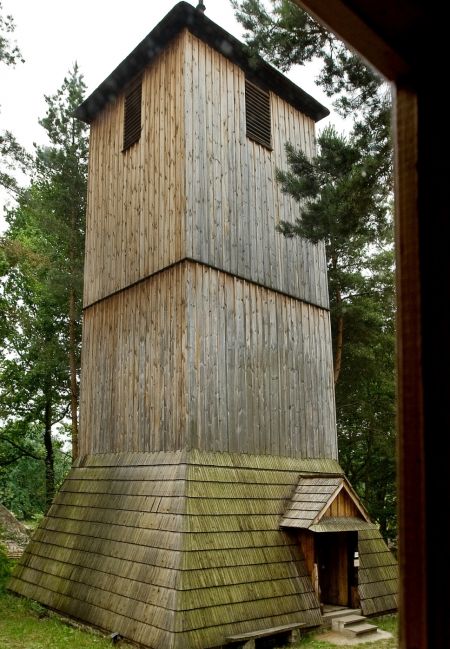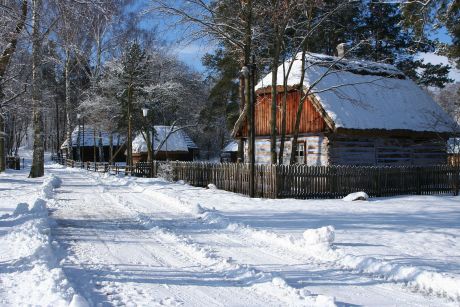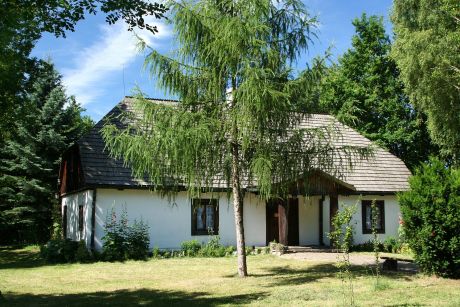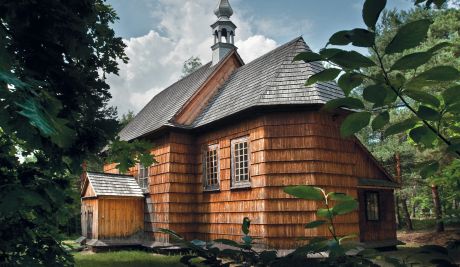The bell tower from Wielgie, a carpentry masterpiece, constitutes an example of a church building. With its structural solutions, the seventeen-meter-long bell tower equals to this type of monuments of the wooden architecture in Poland. It is an independent wooden building with a framework structure. The whole structure develops around the central pole which was attached to four corner poles by means of poles and angle struts which run almost through the entire height of the objects.
The building has four storeys, which may be accessed by wooden stairs. The last storey is available only by a ladder. There were three bells. The object is finished with a shingle hip roof with a needle. The walls are boarded vertically, except for the buttress which surrounds the bottom part of the building which is covered with shingle. The ground floor is compacted of boards, whereas the floors of other storeys are made of “half-round timbers”.
The bell tower may be accessed by a simple, one-wing door above which there is a gable roof made of shingle. The window openings are located upon the highest floor and are shielded with wooden shutters.
The village from which the valuable monument come is also interesting. Wielgie was a place where Jacek Malczewski was raised with a well-known 19th-century writer Wacław Karczewski a.k.a. Marian Jasieńczyk, the author of a peasant epos, the action of which takes place in this village. Karczewski carefully described the traditions and habits, such as Kupala Night. The narration is coloured with properly used jargon. Wielgie is also a background of many paintings of Jacek Malczewski.











